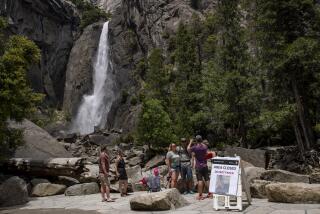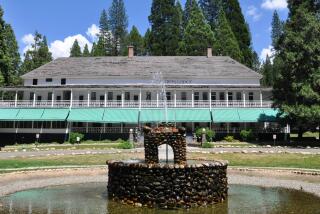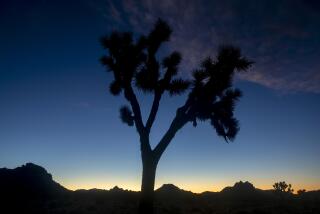15 giant sequoias blew over in Yosemite. Now the park works to reopen
First came the wind — gusts Yosemite National Park spokesman Scott Gediman estimated at 80 to 100 mph. Then came the crashing and crunching in the park’s Mariposa Grove of giant sequoias. Then rain and snow.
Now, as the toll becomes clearer, Gediman said, the “Mono wind event” that began Jan. 18 has caused perhaps “the most damage” measured in the park’s recorded history, including hundreds of fallen trees and crushed structures.
“We found 15 giant sequoias that were completely toppled by the wind” in the Mariposa Grove in the southern part of the park, Gediman said. “There could be more.”
He said early estimates suggest that the cost of repairs “will be in the ballpark” of the park’s flood of January 1997, in which damage was estimated at “upward of $200 million.”
Get The Wild newsletter.
The essential weekly guide to enjoying the outdoors in Southern California. Insider tips on the best of our beaches, trails, parks, deserts, forests and mountains.
You may occasionally receive promotional content from the Los Angeles Times.
The park closed Jan. 19 to keep visitors safe from the storm. It remained off-limits to the public Thursday as rangers assessed the damage and marveled at the lack of storm-related injuries. Downed trees in Yosemite Valley include black oaks, ponderosa pines and incense cedars. There may be many more downed trees along Glacier Point Road, Gediman said. “We have not been up that road yet,” he said.
As of Friday morning, electricity was still out in the Wawona area, which includes the Mariposa Grove.
Though park officials had hoped to reopen on Saturday, Gediman said, that is now scheduled for Monday — a reflection of many safety risks rangers are dealing with.
“And there’s more damage happening, too,” Gediman said. “We’ve got heavy snow falling and snow accumulations in the trees and that’s causing tree failures…. One fell on a ranger’s house in the valley.”
On Friday, morning, he added that “we also had several homes damaged in the Hetch Hetchy area, and more trees are coming down this morning.”
When the park does open Monday, large areas will remain closed, including the southern entrance, Wawona Road (Highway 41), used by most northbound visitors from Southern California.
Gediman said rangers will reopen the park entrances on Big Oak Flat Road (Highway 120), El Portal Road (Highway 140) and Hetch Hetchy Road. Visitors who enter that way will have access to Yosemite Valley.
But those visitors won’t be able to access Tunnel View, Wawona, Badger Pass, Mariposa Grove and some other areas south of Yosemite Valley, he said.
“We are anticipating several weeks” before visitors can enter the park from the south, Gediman said, citing repairs that need to happen first.
These measures come just as park management was responding to Gov. Gavin Newsom’s decision on Monday to loosen COVID restrictions for most of the state. When the park reopens, Gediman said, it will be again be open 24 hours a day, no day-trip advance-reservations required, with reopened lodgings soon to follow.
On Feb. 5, the park’s concessionaires are expected to open the Ahwahnee Hotel and the Yosemite Valley Lodge. On Feb. 8, rangers plan to open the Upper Pines Campground.
Meanwhile, in the southern reaches of the park, rangers and others have much destruction to sort out.
In the Wawona area, falling trees destroyed or damaged 15 to 20 homes, including ranger residences, Gediman said. The fallen giants in the Mariposa Grove, he said, included eight tall trees in the upper grove and seven in the lower grove.
Park pioneer Galen Clark’s Mariposa Cabin, a landmark in the upper grove that goes back more than a century, was undamaged, Gediman said. But elsewhere in the grove, damage included a new bathroom and section of boardwalk that were part of a $40-million restoration project completed in 2018.
As for the timetable for reopening the park’s southern entrance, Gediman said, “We will not be reopening until power is restored.” And even after that, he added, many other safety measures may be necessary before reopening is possible.
More to Read
Sign up for The Wild
We’ll help you find the best places to hike, bike and run, as well as the perfect silent spots for meditation and yoga.
You may occasionally receive promotional content from the Los Angeles Times.







